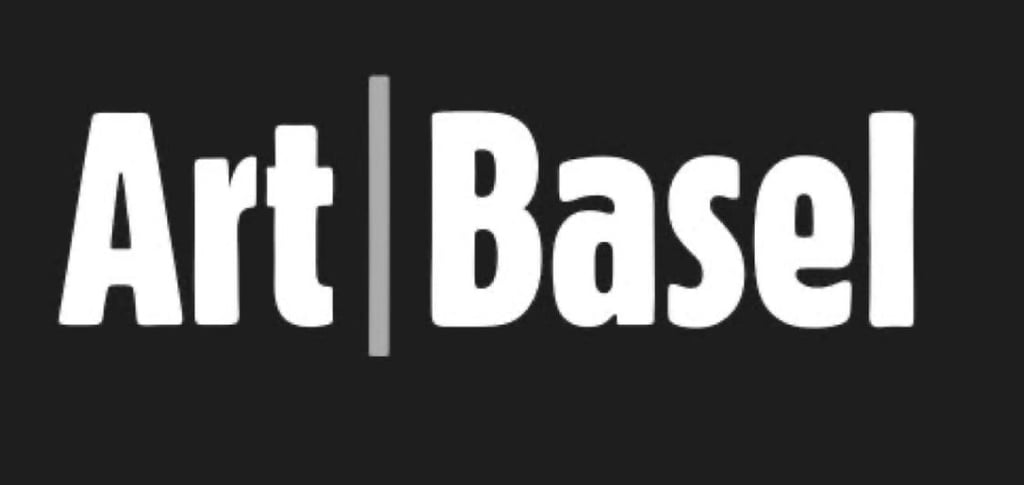Art Basel 2025: The fair that no longer reflects the art world—it defines it.
Germany’s Silent Revolution, Koons’ Pop Dream, and the Allure of the Digital. Basel 2025 reaffirms its role as the global capital of contemporary art, not just by numbers, but by vision. With Germany at the curatorial helm, Jeff Koons stealing the spotlight, and the digital realm gaining structural ground, this edition signals a deep transformation. From the rise of blockchain-native art districts to Web3 panel talks and institutional blockchain strategies, Art Basel embraces not only the aesthetics of today—but the architecture of tomorrow. This isn't just a fair; it’s a mirror, a market, and a manifesto.
INTERNATIONAL FAIRS & EXHIBITION
Charlotte Madeleine CASTELLI
6/19/20254 min read


Basel, June. Walking through the pavilions of Art Basel feels like leafing through a book whose content continuously transforms with each page: the sheen of the market, the depth of critical thought, the unpredictability of performance, and the digital echo of a new era that enters without knocking.
This year, more than ever before, Germany’s presence took on a structural role. It is not merely a matter of numbers—over forty participating galleries—but rather of a deliberate direction, a sort of curatorial backbone that supports the entire fair. With Maike Cruse’s appointment as director, Art Basel has taken a quietly radical turn: rewarding intellectual rigor, curatorial depth, and a pragmatic, clear-sighted approach. Galleries such as Esther Schipper, Galerie Eigen + Art, and Sprüth Magers are leading a discourse where memory, research, and vision intersect. Within this framework, painting is no longer simply a return to form; rather, it is a redefinition of meaning—an intentional offering in response to the background noise of an unstable present. Even in the face of recent cuts to cultural funding in Germany—which threaten the future of many nonprofit spaces—there is a clear determination to resist, adapt, and reassert centrality.
In response to this solidity, the market reacted with its usual spectacular flair. The sale of Jeff Koons’ “Lobster” by Gagosian—a hyperrealist stainless steel sculpture modeled after an inflatable pool toy—garnered attention not only for its multi-million-dollar price tag but for what it symbolically represents: a postmodern icon, a mirror of capitalist frivolity and aesthetic excess. Koons has never stopped questioning collective taste, and this levitating, polished, and reflective lobster continues to do just that. It is ironic, emblematic of status, but also a reminder of art’s capacity to transcend genres and eras—remaining both recognizable and shamelessly sellable.
Yet Art Basel is not defined solely by the theatrics of collecting. The city itself opens up, allowing itself to be overtaken by parallel rituals—performative, sometimes poetic, even moving. I witnessed a surreal performance at the fairground by Mara Wohnhaas, a corporeal narrative punctuated by echoes of childhood and subtle anxiety. I encountered wearable floral installations—like JingParis’ enormous headpiece—that transform the viewer into a walking artwork. And amidst vintage bicycles, ephemeral tattoos, and rosé champagne at the Basel Social Club, one feels immersed in a community that identifies itself in the details, in glances exchanged, in off-beat breaths. Not everything is curated, and perhaps for this very reason, everything feels genuine.
A parallel dimension emerged this year: the digital. The “Digital Art Mile” initiative transformed a section of the city, Rebgasse, into a full-fledged district dedicated to generative art, NFTs, and artificial intelligence. Within this new map of relations, platforms like Danae.io and ArtMeta played key roles, actively proposing new exhibition and narrative formats that engage both blockchain environments and physical audiences. The digital is no longer to be considered “elsewhere”—it is here, already integrated, sometimes subtle, but undeniably structuring.
In tandem, the fair launched the “Premiere” section for the first time—dedicated exclusively to artists whose work was created in the last five years. This fresh initiative seeks to amplify the voices of emerging galleries and talents. Likewise, the introduction of the Art Basel Awards, with a unique peer-voting system among the winners themselves, has signaled a shift in values: the goal is not to crown a single victor, but to recognize and strengthen the network as a whole.
Fashion has also stepped into the arena—not merely decoratively, but strategically. Zegna became the official partner of the fair in Basel, Miami, Paris, and Hong Kong, supporting the Visible program: a platform for socially engaged patronage. This commitment manifests through grants, site-specific projects, and collaborations with artists working across themes of landscape, ecology, and the body. Figures like Vincenzo De Bellis, now on Visible’s strategic committee, embody a new generation of curators and cultural mediators navigating between art and social impact.
In such a complex and interconnected landscape, Art Basel 2025 affirms itself not only as the leading international art fair but as a strategic laboratory for observing both the present and future of contemporary art. The interplay between the German system, new patronage models, digitalization, and the redefinition of curatorial categories marks a decisive turning point from previous editions. The fair no longer merely represents the state of the art—it anticipates it, shapes it, and, at times, defines it.
With increased attention to emerging languages, the consolidation of structural partnerships, and the evolution of exhibition models well beyond traditional parameters, the 2025 edition outlines a shifting ecosystem where distinctions between market, experimentation, and social impact are increasingly blurred. Among the core forces of this shift is the digital element, which is no longer treated as an experimental side note but as a formalized initiative. The Digital Art Mile, held from June 16 to 22 in the Rebgasse district, transformed Basel into a hub for generative art, NFTs, and artificial intelligence.
At the heart of this development was the panel program at Kino Camera, which proved instrumental in establishing discourse and priorities. Notable among them, “Museum in Web3: From Bits to Brilliance,” held on June 16, brought together curators and developers from institutions such as ZKM in Karlsruhe and the Francisco Carolinum Museum in Linz, focusing on redefining patronage and collections in the metaverse. The following day, “Digital Art Market Day” assembled academics and legal experts to address critical issues such as ownership, platform governance, blockchain infrastructure, and the role of AI in the digital art economy.
Other panels—including “Reinventing Museum Collecting and Patronage in Web3” and “From Ownership to Stewardship: The Future of Decentralized Museums”—featured international voices: curators, artists, technologists, and foundation leaders, underscoring a shared ambition to integrate digital art into an institutional and sustainable perspective.
Art Basel further integrated digital discourse within the official fair through its “Digital Dialogues” program, where prominent figures such as Refik Anadol, Krista Kim, and Cory Arcangel joined the leadership of Art Basel Digital to discuss algorithms, public space, and tech-savvy collecting.
The presence of Tezos Foundation and networks such as Objkt, MakersPlace, fx(hash), and Bright Moments made it clear that digital transformation is no longer an option—it is a necessary trajectory. Historic digital works, including those created with the Quantel Paintbox and early GAN experiments from 2015, were revisited with a comparative and historical lens, offering continuity across generations in a framework that was as dialogical as it was aesthetic.
In essence, digitalization is no longer confined to private studios or niche festivals. Art Basel has decisively embraced a structured institutional path that encompasses conferences, exhibitions, platforms, and awards—establishing a new equilibrium between physical space, market dynamics, and virtual environments. This marks the most tangible signal yet that the digital is no longer a future experiment, but rather the connective tissue of the contemporary.
© Charlotte Madeleine Castelli | All rights reserved
